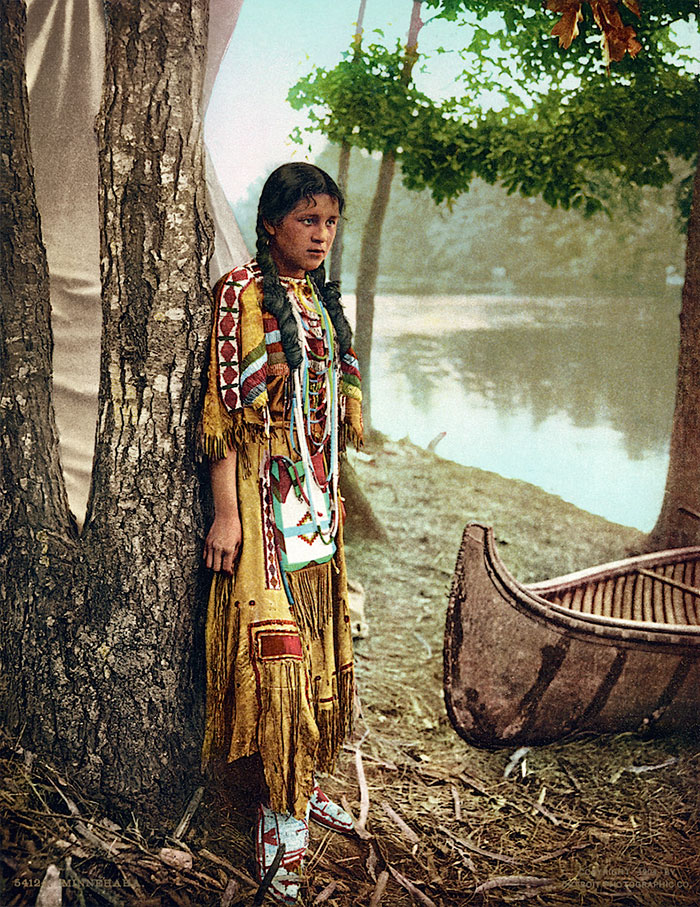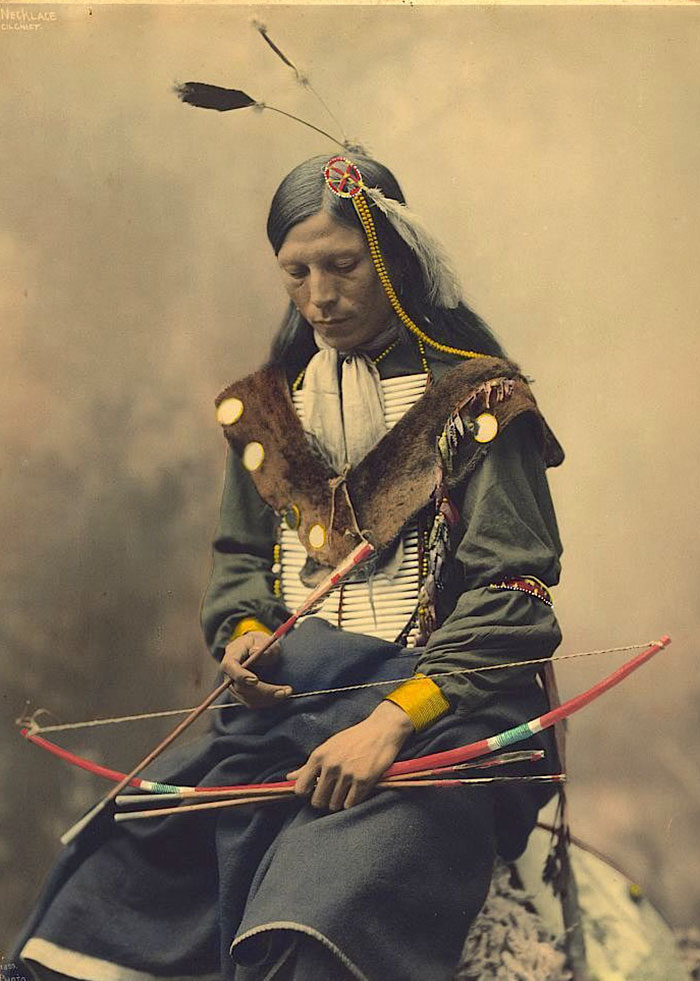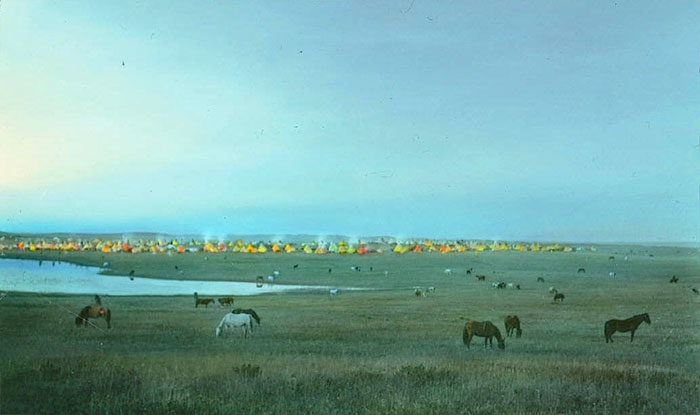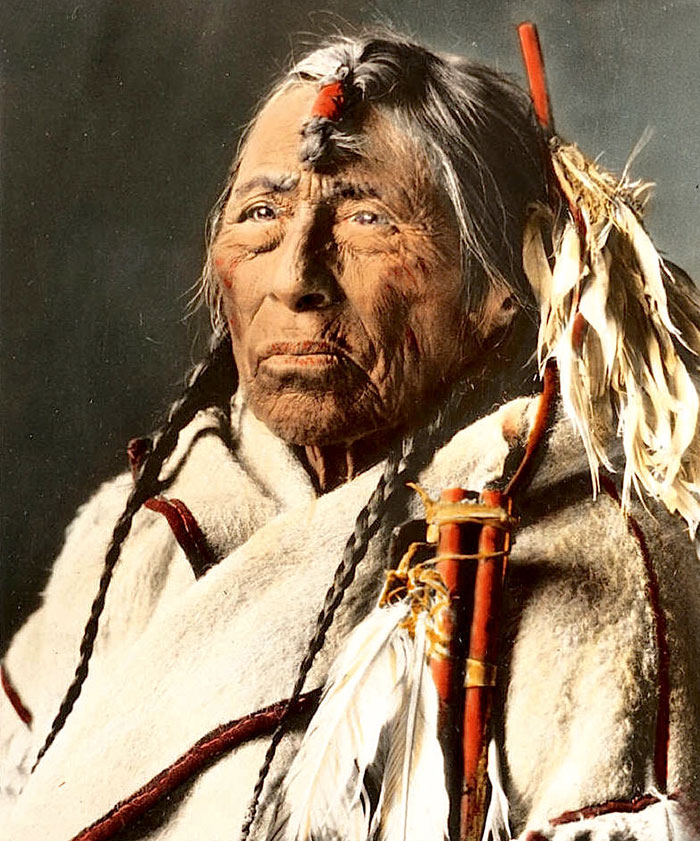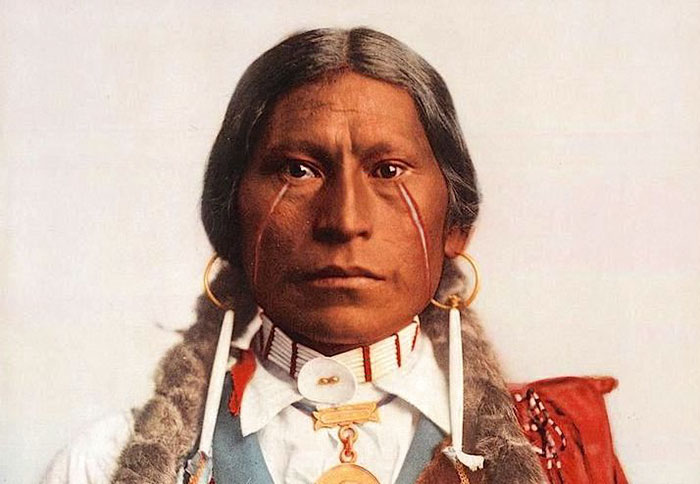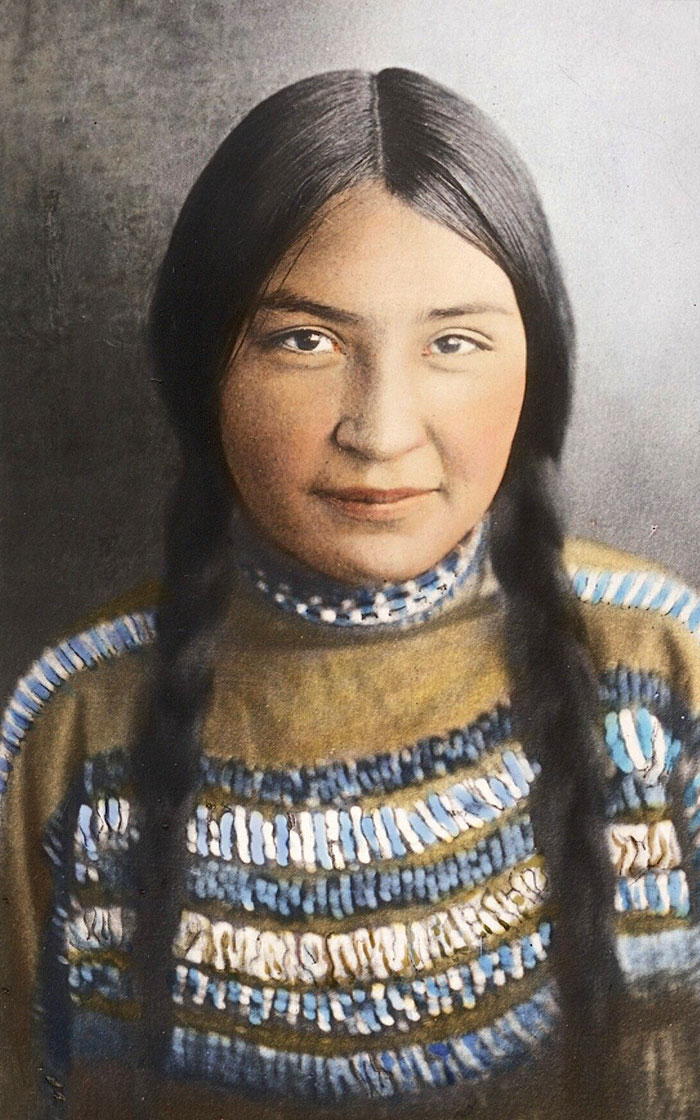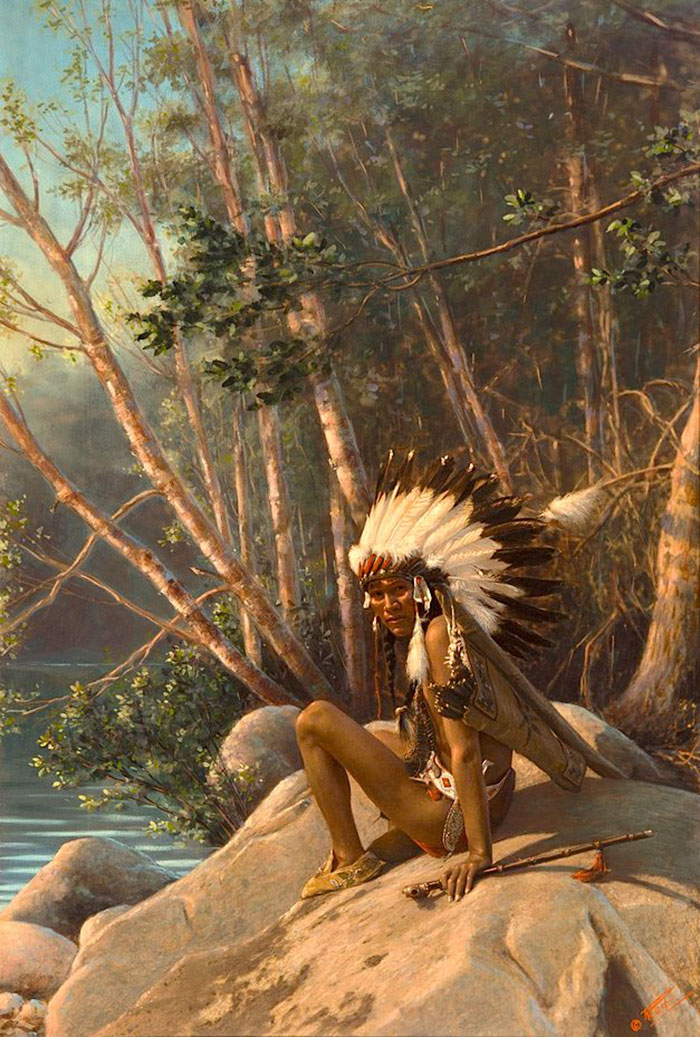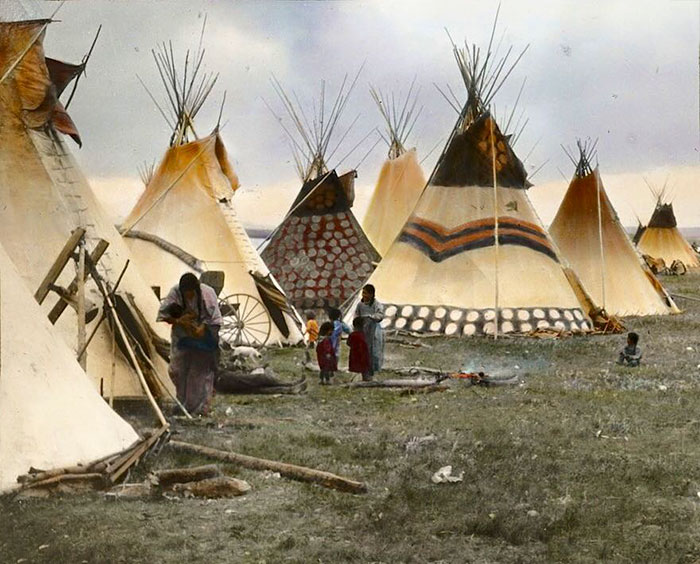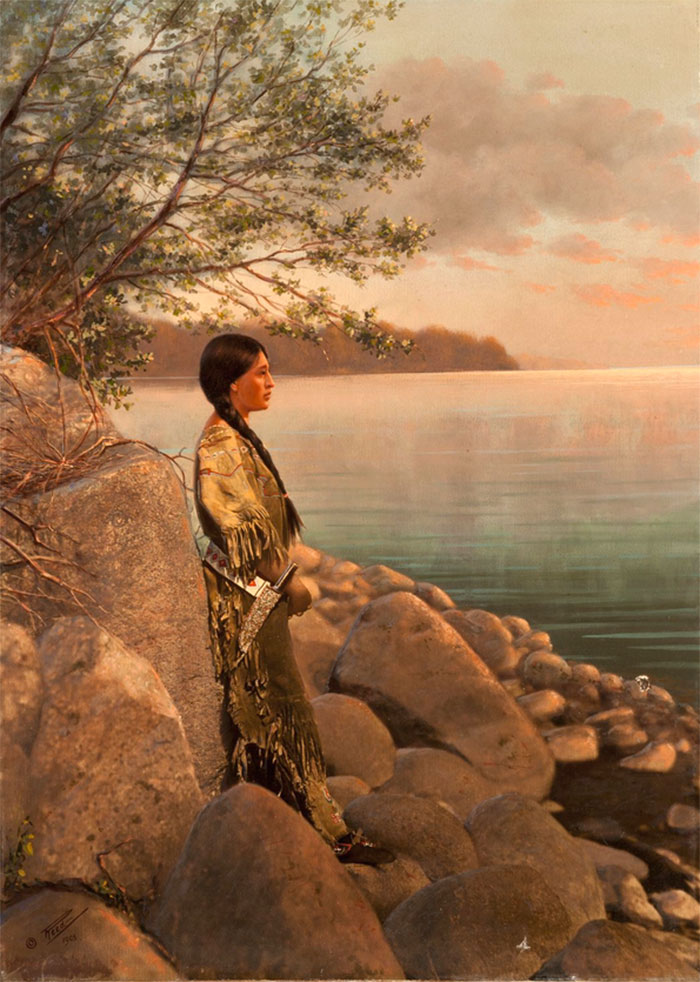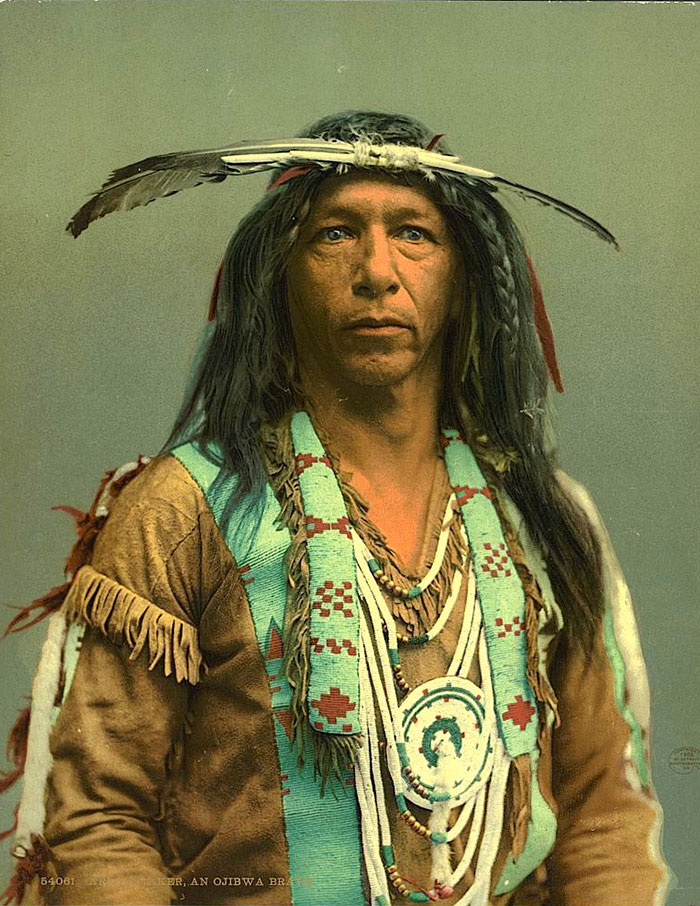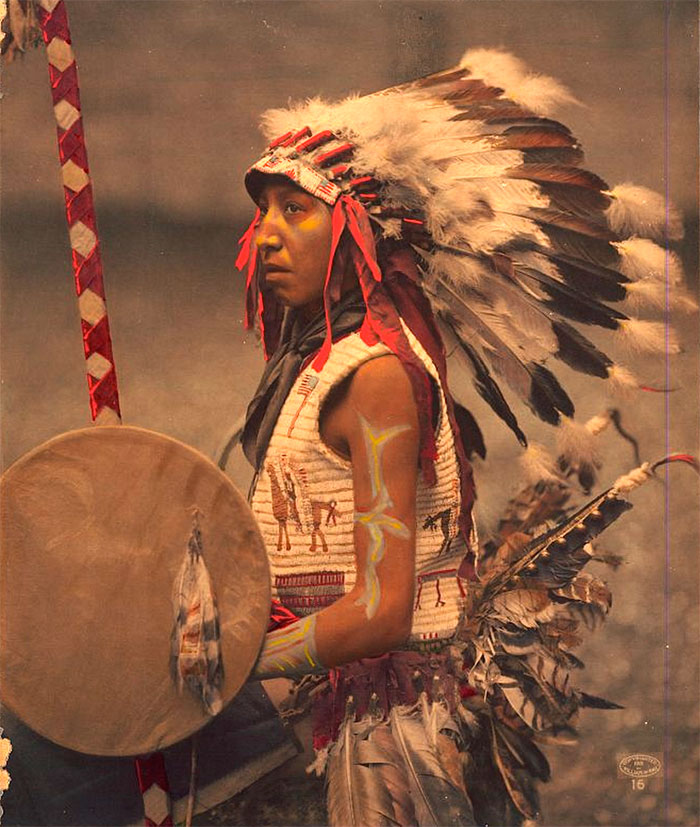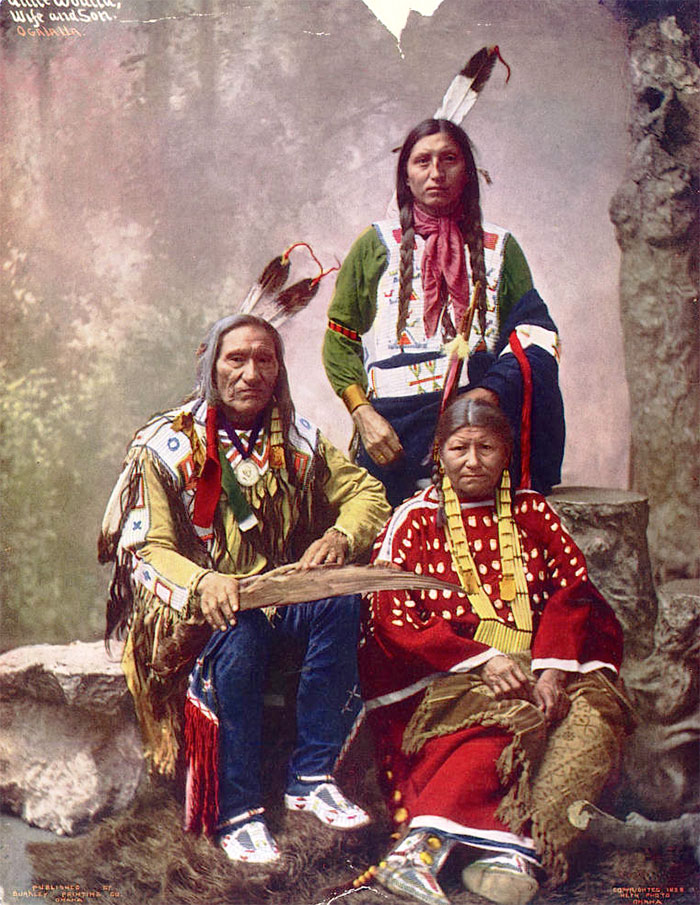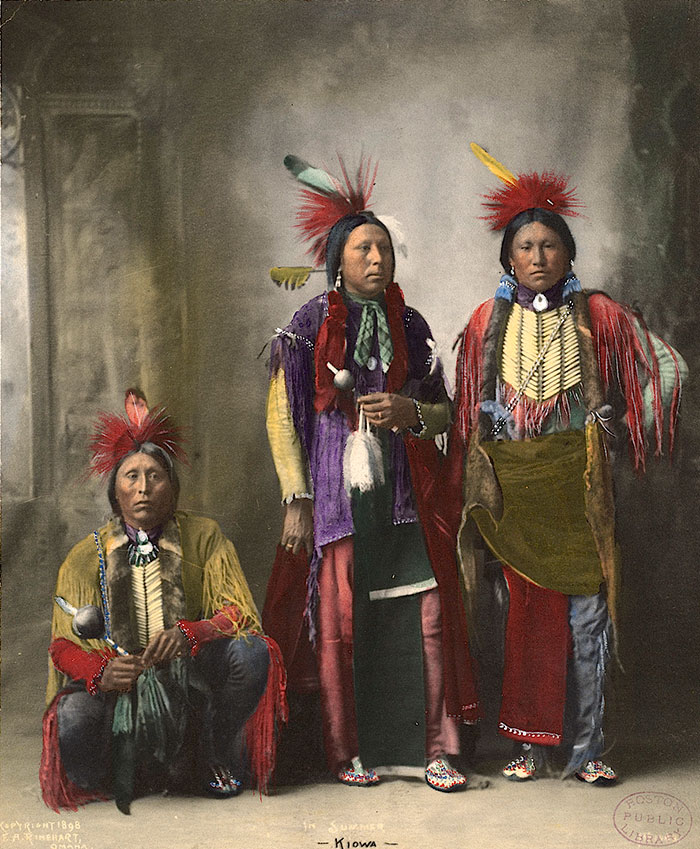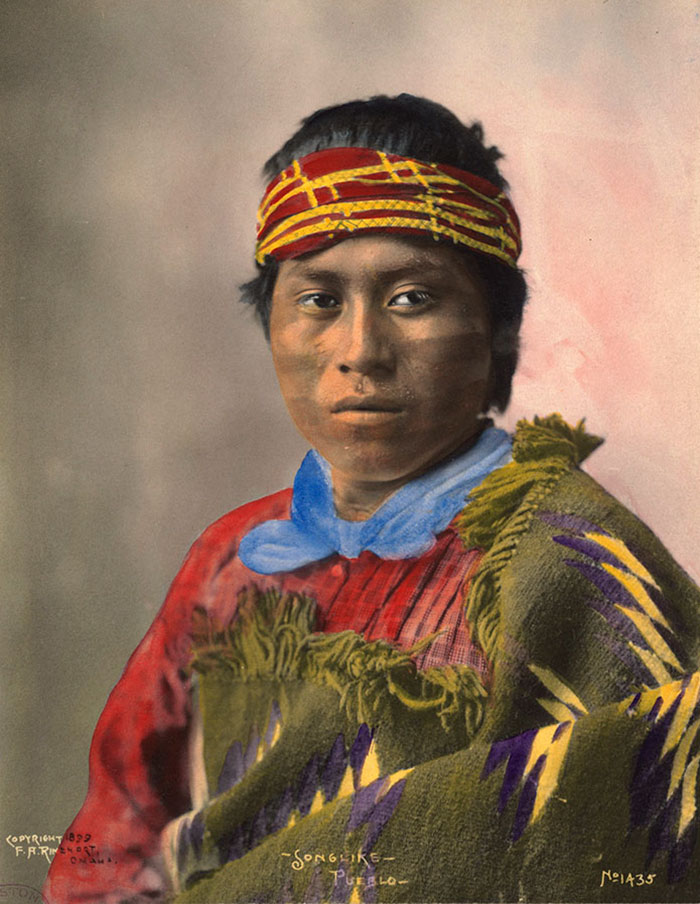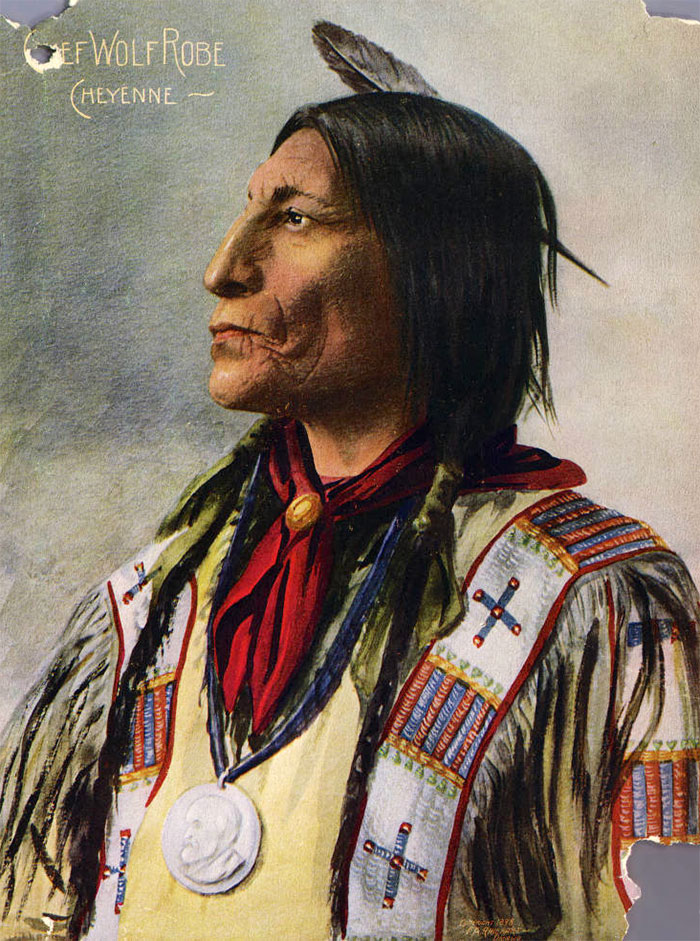15+ Rare Colour Photos Of Native Americans From The 19th And 20th Century
50Kviews
Film-maker Paul Ratner developed a passion for researching old photographs of indigenous people while making "Moses on the Mesa", a film about a German-Jewish immigrant who fell in love with a Native-American woman and became governor of her tribe of Acoma Pueblo in New Mexico in the late 1800s.
“Many of the photographs I found were colored by hand, as color film was only the domain of experimentalists until 1930s (thanks, Kodachrome!)," Ratner writes on Huffington Post. "Painting on black and white prints was an art in and of itself, and many of the colorized photos exhibit true talent which preserved for us the truer likeness of the people many a hundred years ago thought were vanishing. Of course, Native Americans have not vanished despite the harrowing efforts of so many. They are growing stronger as a people, but a way of life they left behind is often only found in these photos.”
#2 Bone Necklace. Oglala Lakota Chief. 1899. Photo By Heyn Photo
ChrisMiilu 2 days ago
This man has a sensitive, intelligent face and beautiful hands. This is an example of those who fell victim to the brutality of those who wanted their land. Sensitive face and beautiful hands. This man is an example of those we murdered for land.
#4 Eagle Arrow. A Siksika Man. Montana. Early 1900s. Glass Lantern Slide By Walter Mcclintock
#5 Chief James A. Garfield. Jicarilla Apache. 1899. Photo By William Henry Jackson
ChrisMiilu 2 days ago
The Apaches were among the fiercest fighters, much feared. Death was meted out slowly and painfully.
